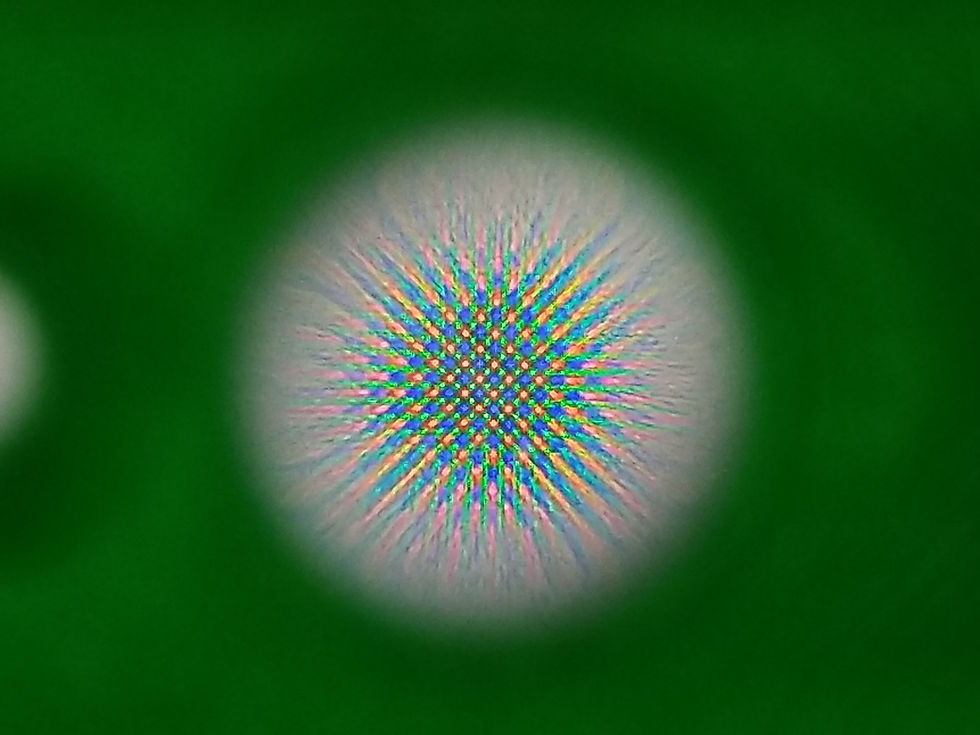Color Mixing with LCD and AMOLED
- Rebecca Vieyra
- Oct 9, 2017
- 2 min read

Yesterday we were delighted to receive a visit from a colleague, Heidi Baumgartner, who developed this microscope that can be 3D-printed and constructed from a screw and some small glass ball-bearings. We spent some time outside, then spent some time using the microscope with our smartphones to take pictures. It wasn't long before we started using the microscope to look at our smartphones. What we found was beautiful (see a video here), and led to an exploration into how colors are generated by the screen...and a deeper understanding of the basic physics of color addition and subtraction.
You might have noticed that white backgrounds generated by various mobile devices are not equally white. This is because smartphones today are dependent upon one of a number of ways that they produce light, generally using liquid crystal display (LCD) or active-matrix organic light-emitting diode (AMOLED).

LCD is the more traditional technology, and relies upon various layers of materials that might include a back light, a diffuser, liquid crystals influenced by an electric field, and polarizers. Bill Hammack (engineerguy) demonstrates an LCD tear down of a computer screen in this fantastic YouTube video. At least three combinations of liquid crystals are used to create all of the colors on the screen: red, blue, and green.
AMOLED does not rely on the same filtering of the back light through crystals. Instead, it relies on the liquid crystals actually directly emitting their own light when activated by an electric current. Unlike an LCD, which has a back light on at all times and relies on polarization to block out light to give the perception of black or darkness, the AMOLED can produce richer black and greater contrast between colors by directly turning off the pixels.
For a more technical description of the difference between LCD and AMOLED, check out this site. What we especially enjoyed seeing, however, was also the arrangement of the pixels (and their sub-pixels of each primary color). The image below is the arrangement of an AMOLED in a Galaxy S8+. Note that there is some aberration due to the lens (causing color mixing), as well as some false colors produced by the image as detected and translated by the camera. Using a microscope, observing a magenta, cyan, or yellow screen produced by Physics Toolbox in the Color Generator mode shows that only sub-pixels of each color that make up the secondary colors are lit. A yellow screen is especially surprising to most, as the only sub-pixels illuminated are red and green!






























Comments